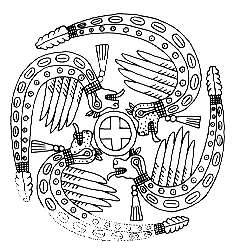Introduction To
Tennessee Indian History Learning Module 1
Many people are unaware of the fact that Tennessee's Indigenous Indian population is actually made up
of a diversity of tribal groups which have been known to exist in Tennessee, with the grandchildren of those tribal groups
continuously occupying the lands that are now known as Tennessee.
In the past, modern day state boundaries did not exist and what is now known as Tennessee was not known
as such before the lands were occupied by the U.S. government. This simple fact is also the cause of much division today
among Tennessee Indians and surrounding "states's" Indians as they experience conflict regarding which state they are actually
from. However, it is the artificial state boundaries, drawn up by the federal and state governments that is the
source of this confusion and conflict.
In this Learning Module you will learn how to identify the main tribal groups that have occupied Tennessee
in the past, and whose grandchildren continue to live on their ancestral lands today. You will also learn
how Indian patriots fought to maintain their ancestral lands in the past.
Tennessee Indian History, Learning Module 1
Indigenous Tennessee Indians who have lived in the area that is now called Tennessee for hundreds and most
probably thousands of years, can trace their lineages back to two main ethno-groups. These two main groups are the Mississippian
(Moundbuilders) and the Woodland Peoples.
After the passing of many years, many Tennessee Indians blended these two main cultures into which
became the foundations upon which present day Tennessee Indian culture is built.
Many of the Mississppian (Moundbuilders) People's tribal groups' names have been lost, with the remaining
known and familiar historical tribal names being comprised of seven main tribes. The names of these seven main tribes are
as follows:
Cherokee Chickasaw Creeks Shawnees
Natchez Yuchi Chikamaka
These people were all part of the Moundbuilder culture even though their languages might have differed.
After 1776, more people from other tribal groups moved into Tennessee and supported the Chikamaka. These
tribal people blended with the Tennessee Indians who already lived in Tennessee even though they had moved away from their
own ancestral homelands. By intermarrying with Tennessee Indians, they too blended their bloodlines with Tennessee Indians
and claimed their new homeland as the birthrights of their children.
The names of these tribal people are as follows:
Mohawk Ottawa Delaware Mingo Saponi Choctaw
Catawba
In addition to the above named groups that blended with Tennessee Indians is a tribe of people named
the Koasati who are rarely mentioned.
The above seven named tribal groups joined with Dragging Canoe and the Chikamakas (whose ancestors were the
Chitimaucas), living with the Chikamakas as a confederacy for over 20 years as they waged a fierce war against the U.S. government
to retain their ancestral homelands.
In 1796 the Tellico Treaty ended the hostilities between the U. S. government, the Cherokees and the
Chikamakas. However, small groups of Indians who did not agree with this treaty continued to fight and put up a resistance
to their lands being taken.
Some of these Indian patriots left the area, while many others stayed in the regions to continue their
claims to their lands by living on their ancestral homelands and clinging to their homes in any manner in which they could
manage.
These fierce and strong, independent patriots are the ancestors of present day Tennessee Indians.

